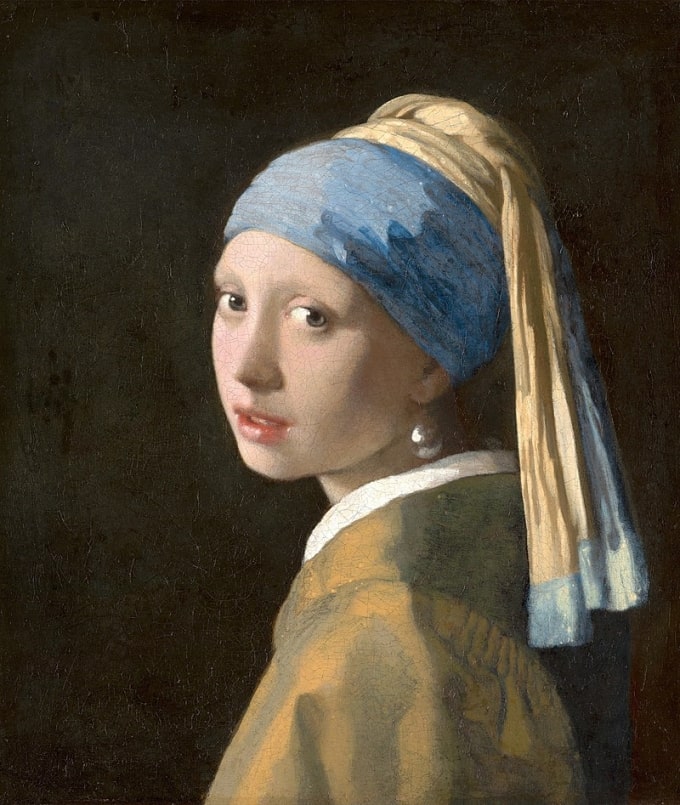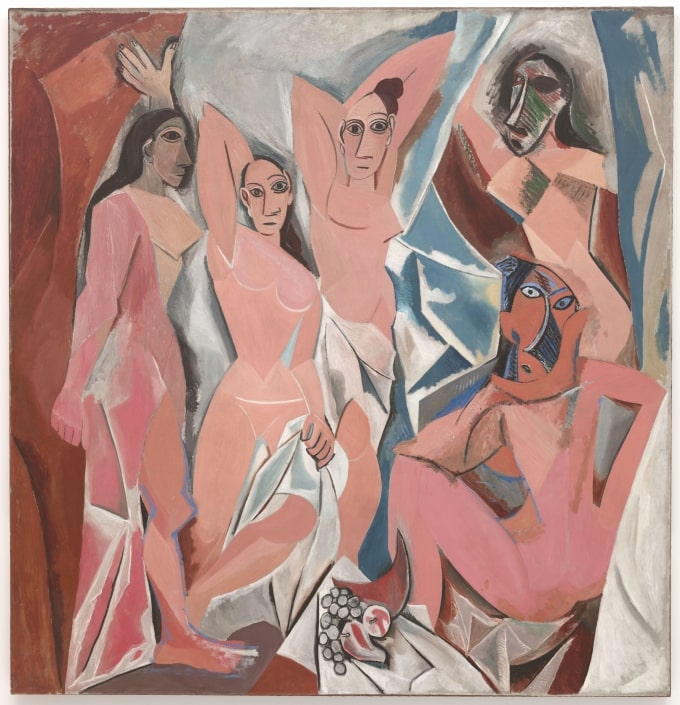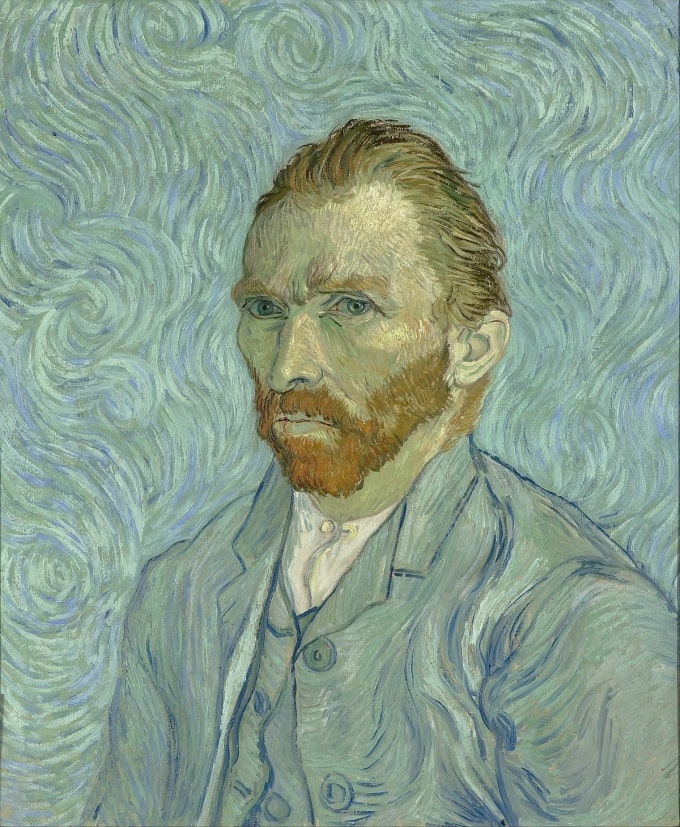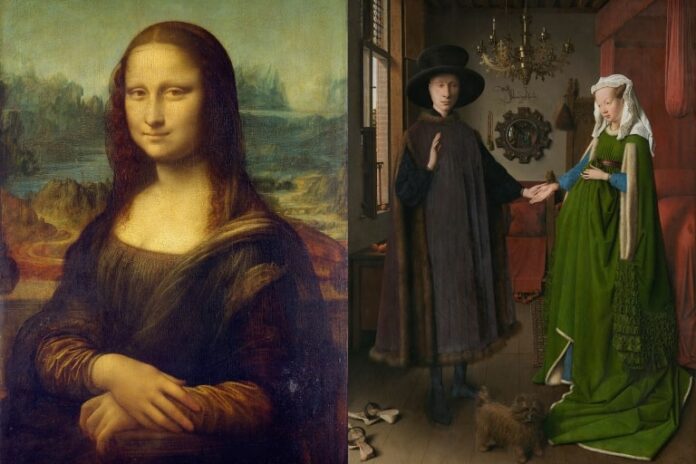Portraiture is an art form that has held a mirror to society, reflecting the nuances of identity, power, and human emotion.
From the soft, ambiguous expressions to the bold, defining gazes, each portrait is a narrative woven through the threads of time, offering a unique insight into the human condition.
1. Mona Lisa by Leonardo Da Vinci
Leonardo da Vinci’s Mona Lisa, residing in the Louvre Museum, stands as the epitome of portrait painting.
The enigmatic smile and the groundbreaking use of the sfumato technique mark it as a pinnacle of artistic achievement. Its mystery and mastery draw millions, making it a symbol of artistic excellence.
2. Girl with a Pearl Earring by Johannes Vermeer

Dubbed the “Mona Lisa of the North,” Vermeer’s masterpiece mesmerizes with its simplicity and the luminous pearl earring that accentuates the young woman’s beauty.
The play of light and shadow showcases Vermeer’s exceptional skill in capturing the essence of his subject.
3. The Arnolfini Portrait by Jan Van Eyck
Featuring the merchant Giovanni Arnolfini and his spouse, this work is a marvel of detail, symbolism, and the innovative use of oil paints.
It offers a glimpse into 15th-century life, filled with intricate details that invite viewers to decipher its meanings.
4. Portrait of Adele Bloch-Bauer I by Gustav Klimt
Gustav Klimt’s “The Woman in Gold” is renowned for its lavish use of gold leaf and intricate patterns.
The painting’s history, marked by Nazi theft and a landmark restitution case, adds layers of significance to its breathtaking beauty.
5. American Gothic by Grant Wood
Representing a farmer and his daughter, American Gothic captures the essence of the American spirit during the Depression era. Wood’s portrayal is a testament to resilience and the enduring strength of rural America.
6. Self-Portrait with Thorn Necklace and Hummingbird by Frida Kahlo
Frida Kahlo’s self-portraits are intense explorations of her identity, pain, and passion.
This particular work uses symbolic imagery to delve into Kahlo’s personal struggles, showcasing her unparalleled ability to convey complex emotions.
7. Les Demoiselles d’Avignon by Pablo Picasso

Picasso’s groundbreaking work heralded the Cubist movement, challenging traditional perspectives with its abstract depiction of figures.It remains a pivotal piece in the conversation about modern art’s evolution.
8. The Night Watch by Rembrandt van Rijn
More than a portrait, The Night Watch is a vivid narrative captured in paint, demonstrating Rembrandt’s mastery over light and shadow.
It’s a dynamic moment of history frozen in time, showcasing the camaraderie of Amsterdam’s civic guards.
9. Whistler’s Mother by James McNeill Whistler
Known formally as “Arrangement in Grey and Black No. 1,” this iconic work is a masterclass in composition and color harmony, immortalizing Whistler’s mother in an emblem of maternal serenity and dignity.
10. Self-Portrait by Vincent Van Gogh

Van Gogh’s self-portraits are windows into his soul, expressing the turmoil and brilliance of one of art’s most troubled geniuses. His innovative use of color and texture communicates his inner state and creative vision.
11. The Portrait of Dorian Gray by Ivan Albright
Created for the film adaptation of Oscar Wilde’s novel, Albright’s painting of Dorian Gray is a unique piece that captures the essence of decay and corruption, standing as a testament to the power of visual storytelling.
12. Napoleon Crossing the Alps by Jacques-Louis David
David’s depiction of Napoleon is a blend of romanticism and propaganda, immortalizing the French leader in a moment of power and determination, forever capturing the spirit of an era.
13. The Death of Marat by Jacques-Louis David
This painting is a poignant representation of Jean-Paul Marat, a leader of the French Revolution, at the moment of his assassination.
David’s work is both a political statement and a masterful piece of portraiture, imbued with emotion and historical significance.
Conclusion
Portrait paintings are more than just depictions of individuals; they are narratives captured in brushstrokes, colors, and textures. They tell stories of love, power, struggle, and identity that resonate across generations.
To learn more on this website would enrich one’s understanding of art’s profound impact on culture and history, providing a deeper appreciation for these timeless masterpieces and the artists who created them.
